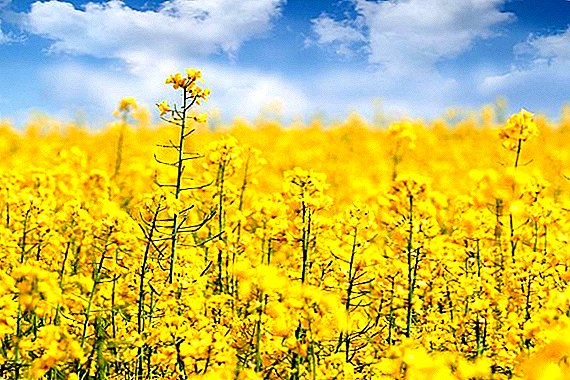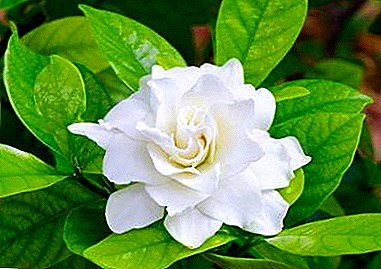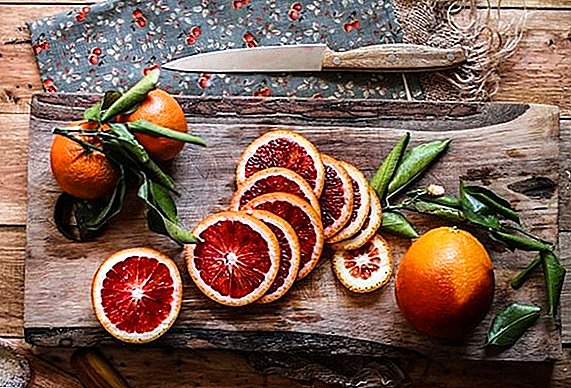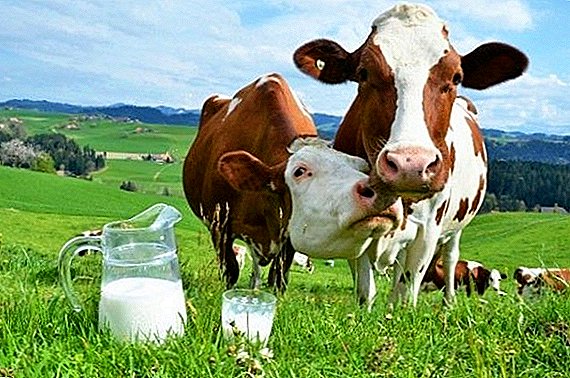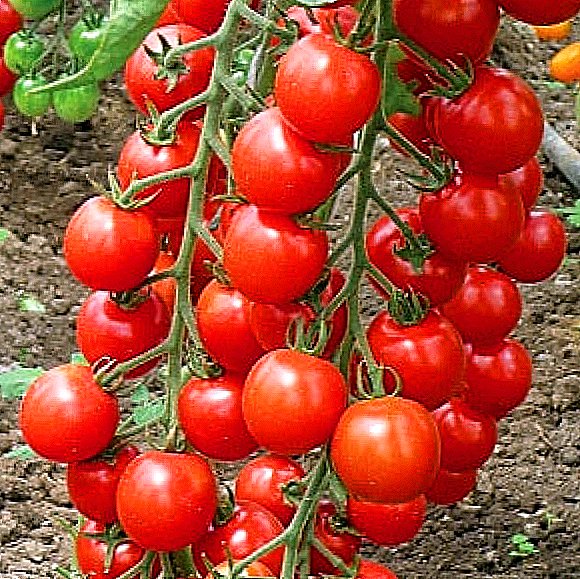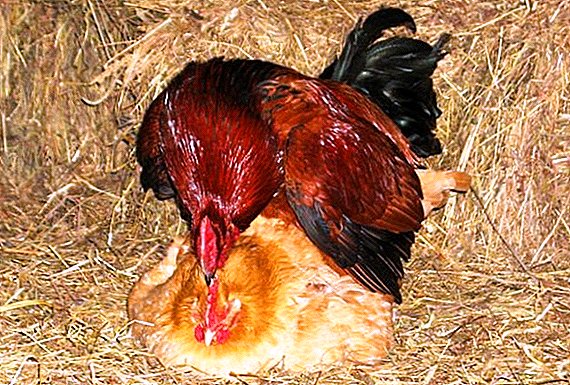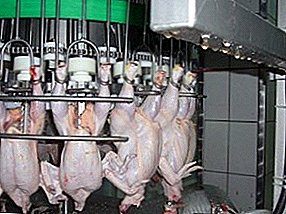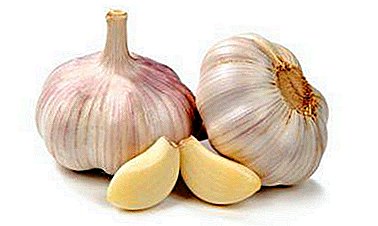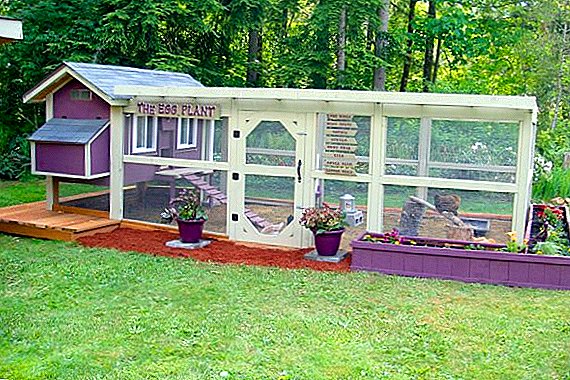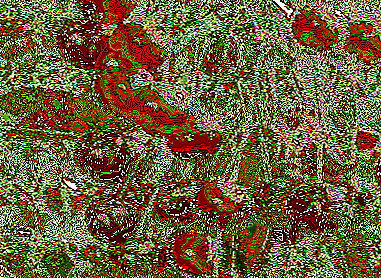
Cherry is a rather ancient, very common and beloved culture of gardeners. Today, there are already more than 200 different varieties of cherries, which differ greatly from each other in their appearance and taste.
All these varieties are divided into two types: treelike and bush.
Spray cherries are different small size and frost resistancebut don't live long about 15-17 years old.
Tree varieties - these are tall trees, not very cold-resistant, but durabletheir lifespan more than 30 years. These tree varieties are very popular among the people. cherry shubinka or Shubinsky. Variety description - further in the article.
Breeding history and breeding region
 Cherry variety Shubinka is an old folk variety.
Cherry variety Shubinka is an old folk variety.
According to the degree of distribution Shubinka ranked second after Vladimir's cherry.
This variety appeared in Moscow province back at the end of the 19th century and quickly spread in other regions.
This local Moscow variety was zoned in 1959 in the North-West, Central regions of Russia and the Volga region.
In a short time, Shubinka cherry was grown throughout the USSR.
Today this variety can be found in Belarus, Ukraine, Moldova and the Baltic States.
Although, thanks to the breeding of new, more resistant varieties, Shubinka was no longer grown in industrial fruit growing and very rarely planted in young gardens.
Volochaevka, Molodezhnaya and Tamaris are successfully grown in the Central Region.
Appearance of cherry coat
Consider separately the appearance of the fruit tree and the fruits themselves.
Tree
The tree at Shubinka is tall, more than 4 m, with a sprawling pyramidal, not very thick crown.
The shoots are thin, light brown, with a greenish tint and a faint gray bloom. The main branches are thick, dark brown.
 The leaves are green, dark, medium-sized, oval, with sharp tops and base, and fine teeth on the edges.
The leaves are green, dark, medium-sized, oval, with sharp tops and base, and fine teeth on the edges.
The flowers are white, small, grow in several pieces in the inflorescence.
Petals loosely pressed, bifurcated at the ends.
Fruit
The berries are small, sometimes medium, weighing 2.2-2.6 grams, round, with lateral seam flat, dark red or burgundy. The flesh is friable, dark, aromatic and juicy, but very sour, astringent, with not the most pleasant taste.
More sweet and tasty fruits have a Fairy, Black Big and Toys.
The stone is small, round, separating from the pulp very badly. Fruits firmly on a long, thin stalk, so they do not crumble when overripe.
A photo





Characteristics of a variety
Shubinka - a variety of medium or medium late ripening. You can harvest from early August to late September.
Fruit this cherry starts quite early, 4-5 years after landing. The average yield per adult tree is 18-25 kg.
Shubinka - partially self-infertile. The best pollinators for it will be the varieties: Lyubskaya, Black Shipport, Vladimirskaya, Moscow Griot, Sayka.
 For a higher yield, it is advisable to plant in the same area with Shubinkae less than three pollinating varieties.
For a higher yield, it is advisable to plant in the same area with Shubinkae less than three pollinating varieties.
Winter hardiness of this cherry is quite high.. It tolerates not only severe winter frosts, but also spring frosts.
Winter-hardy are also varieties Volochaevka, Morozovka and generous.
But, at lowering t to -34-35 С, can freeze slightly buds and young shoots. therefore Young trees must be covered for the winter.
The correct choice of landing site and timely feeding and processing of wood, can significantly increase its frost resistance.
Planting and care
For Shubinka well suited bright and warm place with light sandy loams or loams, eg, near the wall of the house or near the fence. It is important to observe distance of at least 7-8 m from them.
To the conditions of growth it is undemanding, but in raw and cold lowlands will not grow.
If in the selected area the groundwater level is higher than 2-2.5 m, then it is necessary to artificially make a high earthen hill and plant a tree on it.
 Prepare the soil on the plot in the fall, and landing is possible only in springwhen the earth is well warmed, but the buds have not yet swelled.
Prepare the soil on the plot in the fall, and landing is possible only in springwhen the earth is well warmed, but the buds have not yet swelled.
The selected area is well dug up, select all the weeds and add fertilizer: 1-1.5 buckets of dung or compost, half a cup of superphosphate and 50 grams. potassium sulfate per square meter m
If the soil is acidic, then about 1-2 months before fertilization, it is lime. Best suited for this lime-pushonka (400 gr. per sq. m.). After soil preparation, you can dig landing pits. They are also prepared in the fall.
Optimal depth pits - 50-60 cm, and diameter - about 1 m.
It is necessary to dig several holes at once: for fur coats and pollinators. The distance between them should be no more than 3 m.
A peg, 1.2-1.5 m high, is driven into the bottom of the finished pit and a small layer of drainage is laid (best of all from large pieces of branches and bark). Then filled with cooked primer.
For this you can take 4-5 buckets of rotted manure, a bucket of wood ash, 0.5 buckets of fresh horse manure and mix well with a small amount of top layer of earth.
Another variant: 2 buckets of refractory manure, mix with potassium sulfate (80-90 gr.), The top layer of soil and add a pound of superphosphate.
 For planting choose a strong two-year seedling: 2-3 cm in diameter, long stem not less than 50-60 cm and main branches not shorter than 40 cm.
For planting choose a strong two-year seedling: 2-3 cm in diameter, long stem not less than 50-60 cm and main branches not shorter than 40 cm.
It is placed in a hole, carefully buried, tied loosely to a peg and trampled down to the ground.
Around the trees make a deep hole and poured into it. no less than 3-4 buckets of heated water. After that, the hole is required Mulch dry humus.
It is important not to deepen the root neck of the seedling. She should stay at a height of 5-6 cm above ground level. After the subsidence of the soil can be a little sprinkle with soil.
In the first year of life, the tree is not fertilized. Carry out regular weeding, watering and loosening. Water it as the soil dries.
In dry and hot weather - 3-4 times a month. One plant is poured no less than 4-5 buckets of water. In winter, the trunk of the tree is well warmed.
With the onset of fruiting - fertilizing increase. The first is carried out in the spring, before flowering. You can use a solution of potassium sulfate and urea.
The second dressing is done at the beginning of the ripening of the berries (nitrophoska).
The third - after picking berries (phosphorus and potassium). Under the autumn digging, you can make organic fertilizer. Every 4-5 years the soil is lime.
 The first pruning of seedlings carried out at the time of planting. Leave 6-8 of the strongest branches and shorten the trunk a little.
The first pruning of seedlings carried out at the time of planting. Leave 6-8 of the strongest branches and shorten the trunk a little.
Forming pruning Shubinki spend annually, in spring, during the first 4-5 years, before the final formation of the crown.
By this time by the tree there should be about 7-8 large main branches.
Annual shoots shorten, leaving no more than 40-50 cm
Particular attention should be paid to the timely removal of root shoots, cutting out excess, crown-thickening shoots and pruning of old and diseased branches. Conduct such a procedure every year, in the spring.
Diseases and pests
Despite its simplicity and winter hardiness, Fur coat is pretty often affected by coccomycosis and can sometimes be attacked escape moth. How to protect the tree from these troubles?
Coccomycosis caused by fungusaffecting cherry leaves. If this disease is started, then the berries may suffer. When infected, small reddish dots appear on the upper side of the leaves.
Over time, they grow and cover all the leaves, and on the lower part of the leaf a pinkish bloom of mushroom spores is formed.
 Such leaves dry quickly and fall off. The tree weakens, stops growing, becomes less frost-resistant and may even die.
Such leaves dry quickly and fall off. The tree weakens, stops growing, becomes less frost-resistant and may even die.
The fungus overwinters in the old fallen leaves, so it is very important to annually carry out thorough cleaning and loosening of the tree trunk. All leaves must be shoveled and burned.
In the fight against coccomycosis, spring treatment of wood with 3% Bordeaux mixture or urea solution helps well. At the end of flowering can be used oxychloride copper.
Among varieties resistant to coccomycosis, one should pay attention to Tsarevna Felt, Podbelskaya, Ashinskaya Steppe and Zhivitsa.
Escape mole feeds on buds, young leaves, buds and buds of the cherry. The caterpillars of this moth pupate in the soil under a tree and at the beginning of summer turn into butterflies.
You can fight moths with wood treatment with insecticides, as well as digging and loosening the soil.
The old, time-tested Shubinka variety has been replaced by many young and promising varieties, with more beautiful and tasty fruits, high yields and disease resistance. In industrial gardening, this variety has not been grown for a long time.
Of the advantages of the variety can be noted:
- very good winter hardiness;
- partial self-fertility;
- good yield.
 The disadvantages include:
The disadvantages include:
- sour berries;
- moderate resistance to coccomycosis.
But despite this, Shubinka does not lose popularity.
Shubinki berries make wonderful jams and preserves, and can often be found in old gardens and in the suburban areas of the Moscow region.
Among the popular and unpretentious varieties stand out the cherries Vianok, Dessert Morozova and Lebedyanskaya.


